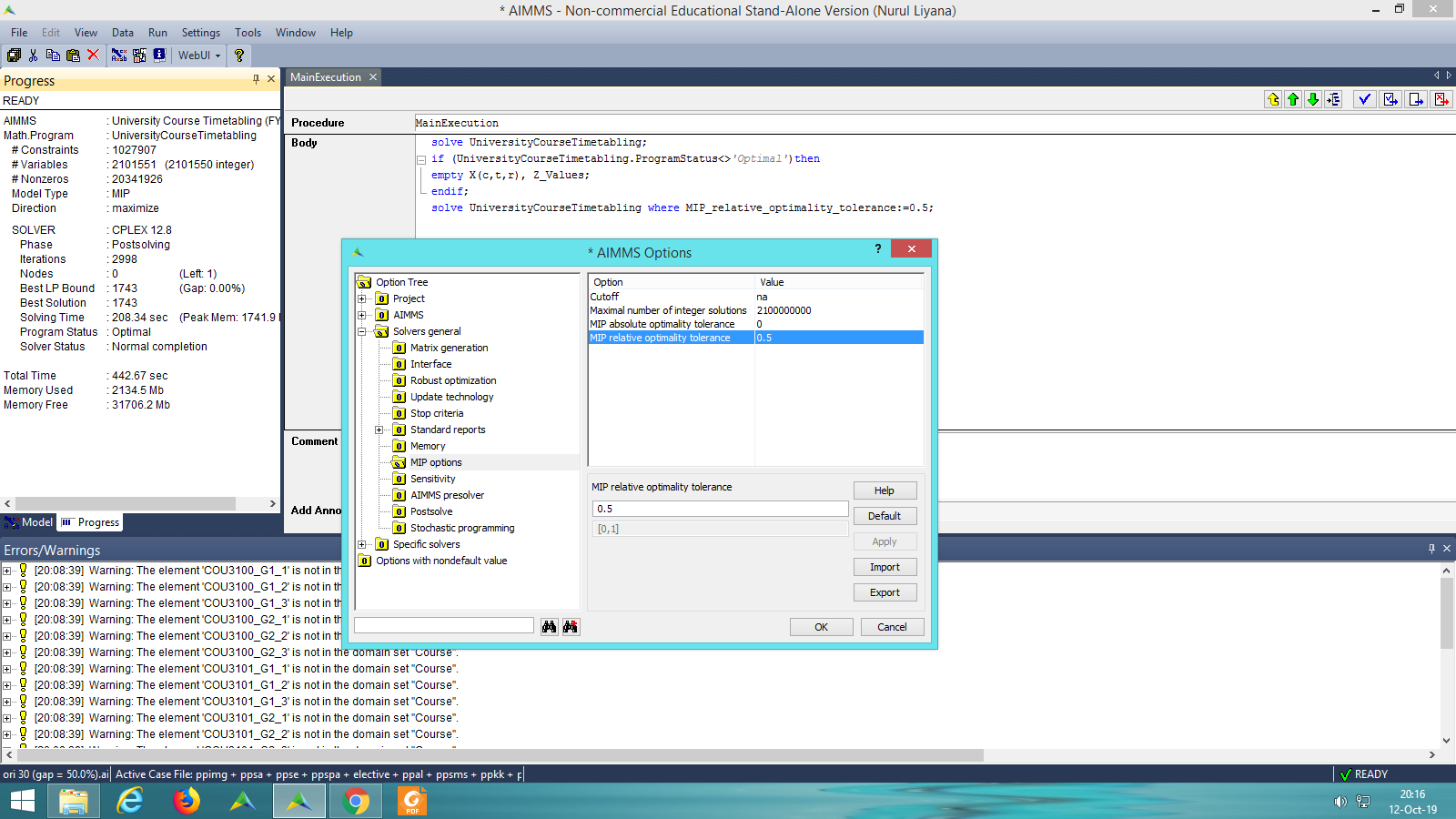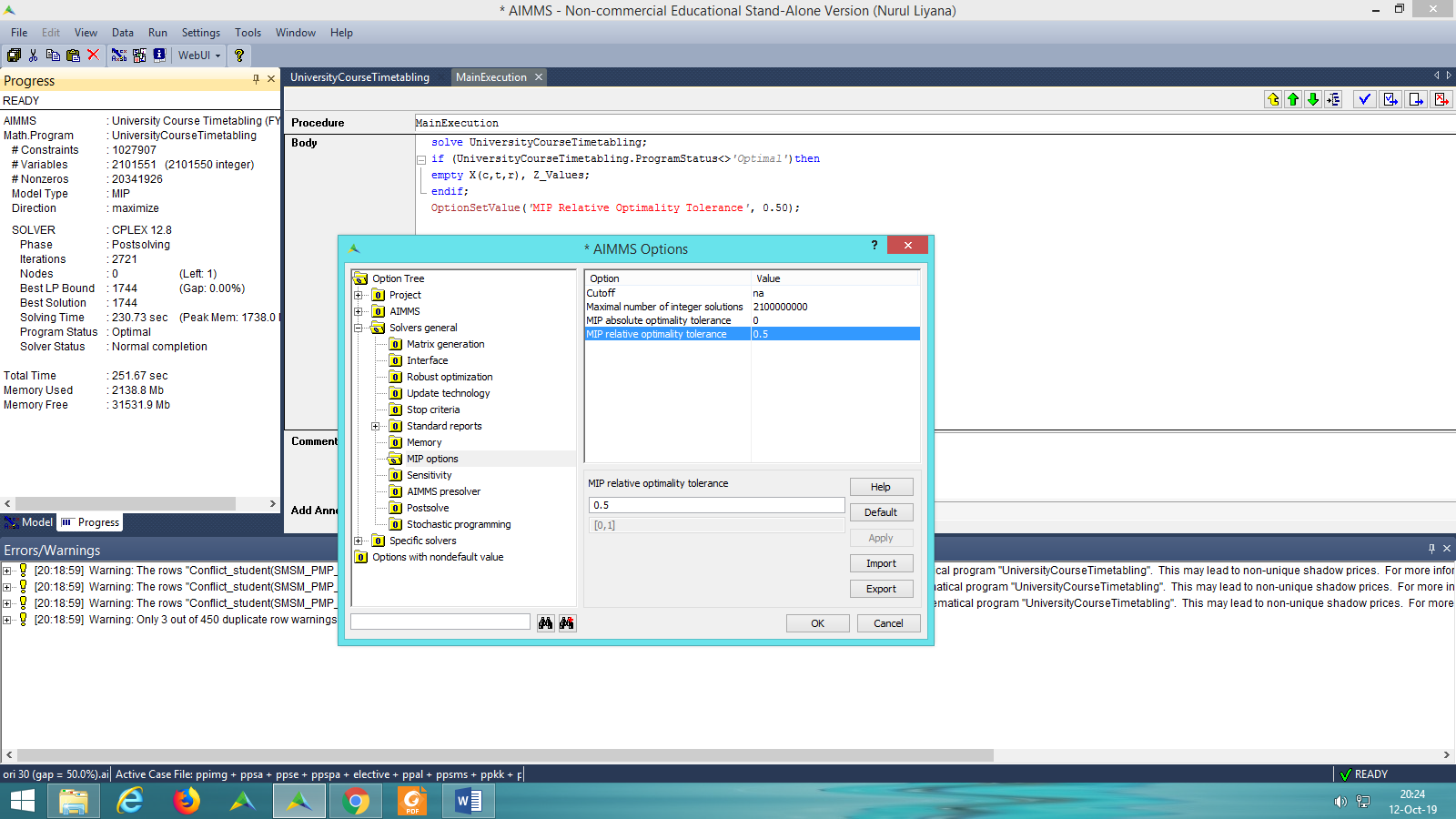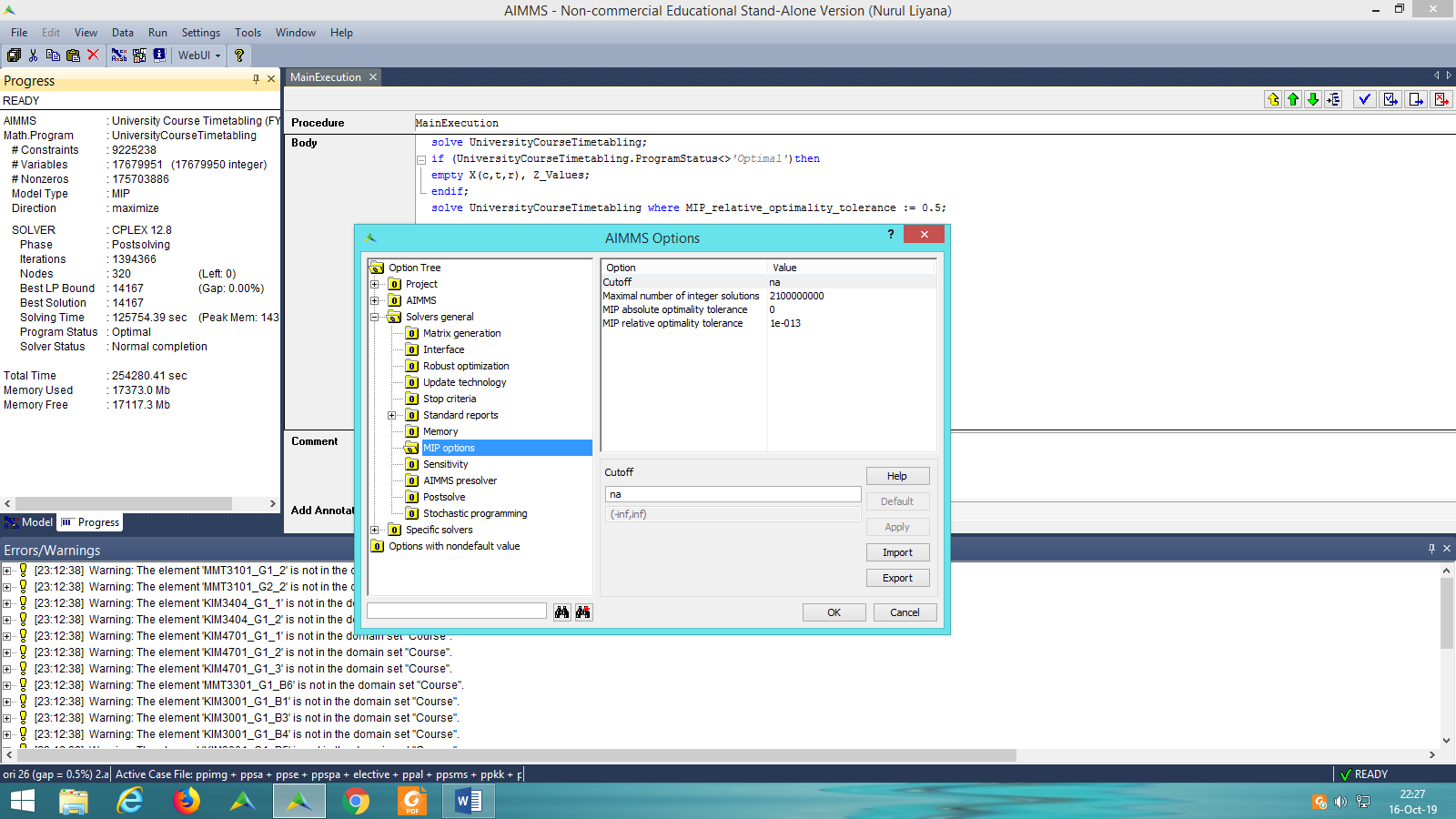MIP Relative Optimality Tolerance
In the Options Tree, I have been changing the MIP Relative Optimality Tolerance to 0.5%, 1.0%, 5.0% and 10.0% to analyse the performance of the solution, gap and solving time.
I wish to change the gap to 0.5%, 1.0%, 5.0% and 10.0% to analyse whether the solving time can be reduce by changing the gap. However, the CPLEX always stop at either 0.04%, 0.12% or 0.00% of gap. Is there any way to stop the CPLEX at 10% of gap?
Best answer by Marcel Hunting
The CPLEX status file shows that CPLEX only finds one integer solution (incumbent) during the solve, with a gap of 0.01%. (So, the only integer solution that CPLEX finds is very good, namely optimal or nearly optimal.)
That means that if you set the relative optimality gap to a value that is higher than 0.01% then CPLEX will immediately stop after finding this integer solution, and the final gap will always be 0.01%. (So for this instance it is not possible to make CPLEX stop with a gap of 10%.)
Sign up
Already have an account? Login
Please use your business or academic e-mail address to register
Login to the community
No account yet? Create an account
Enter your E-mail address. We'll send you an e-mail with instructions to reset your password.







